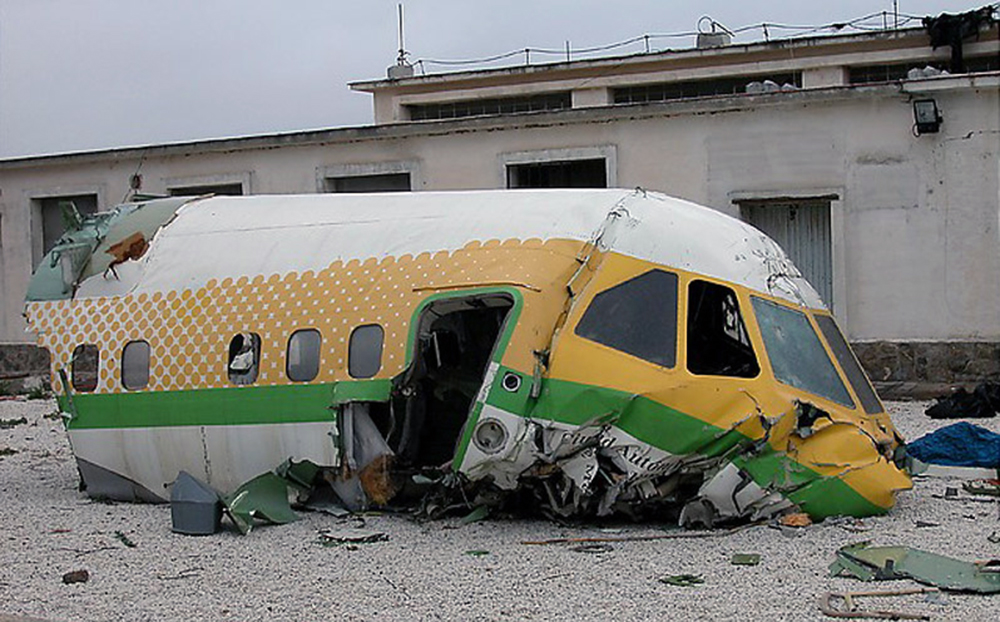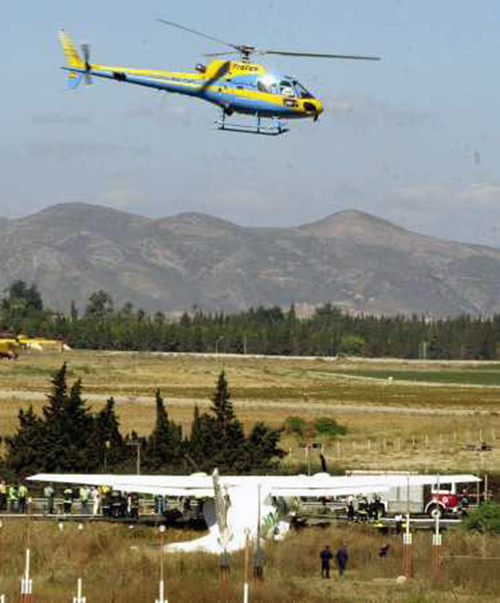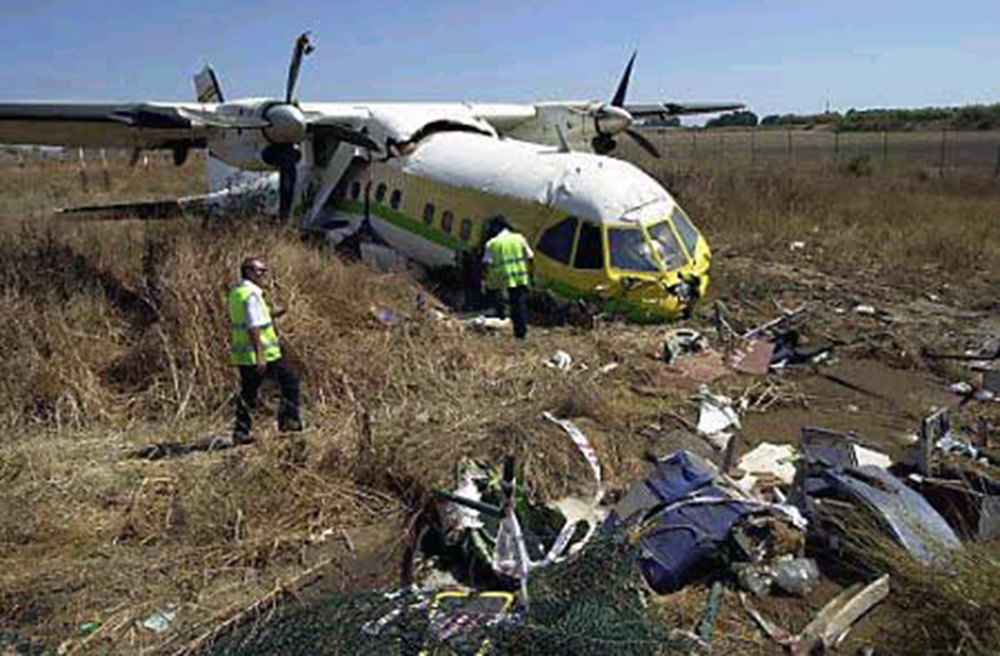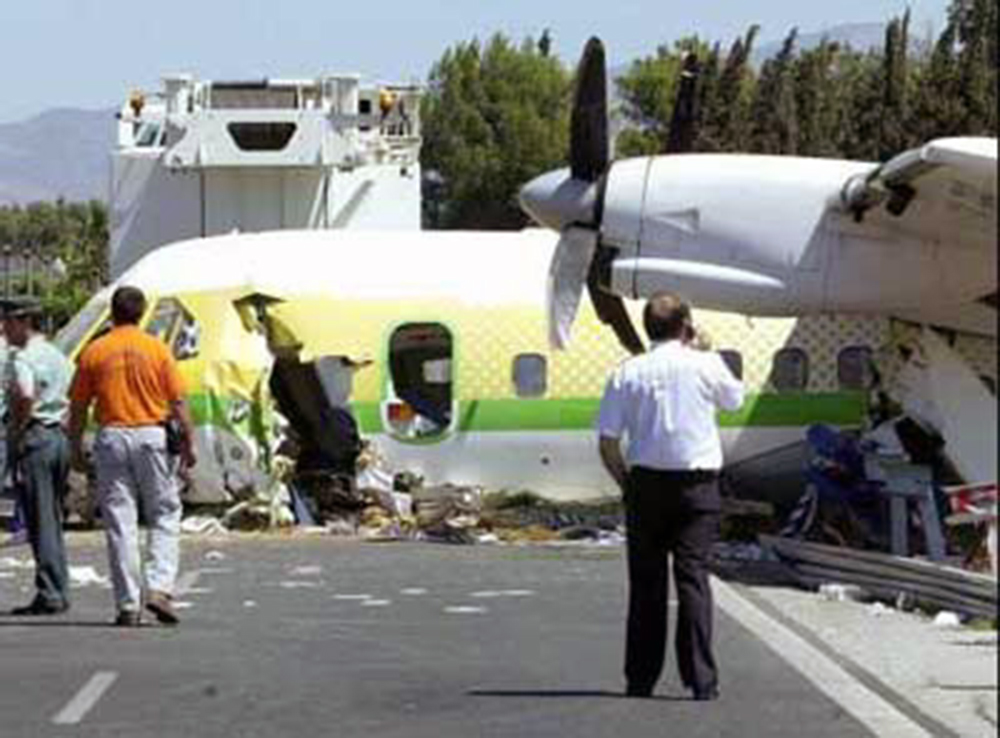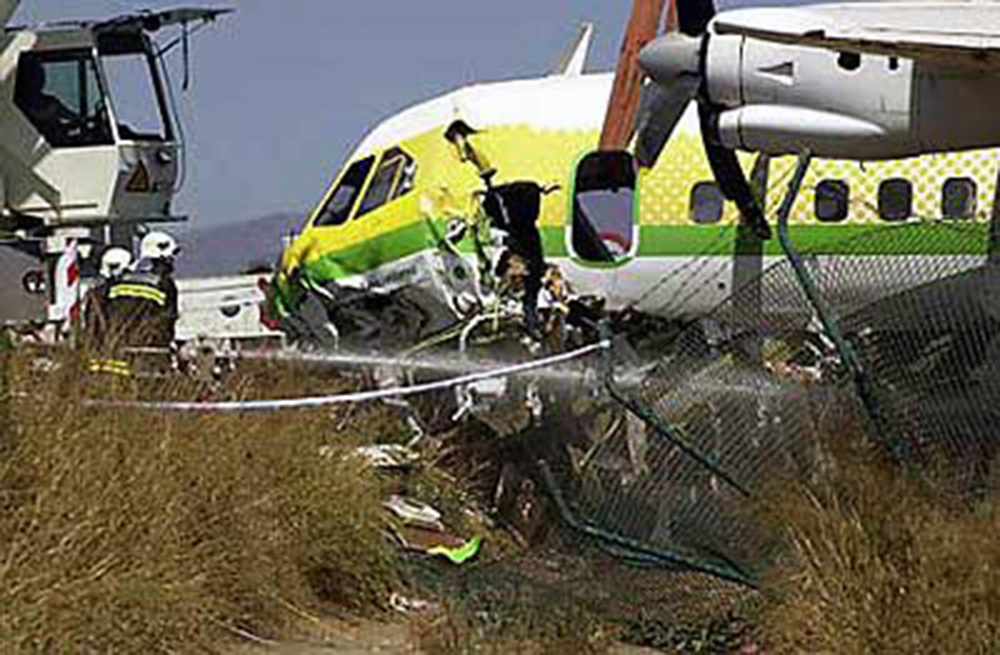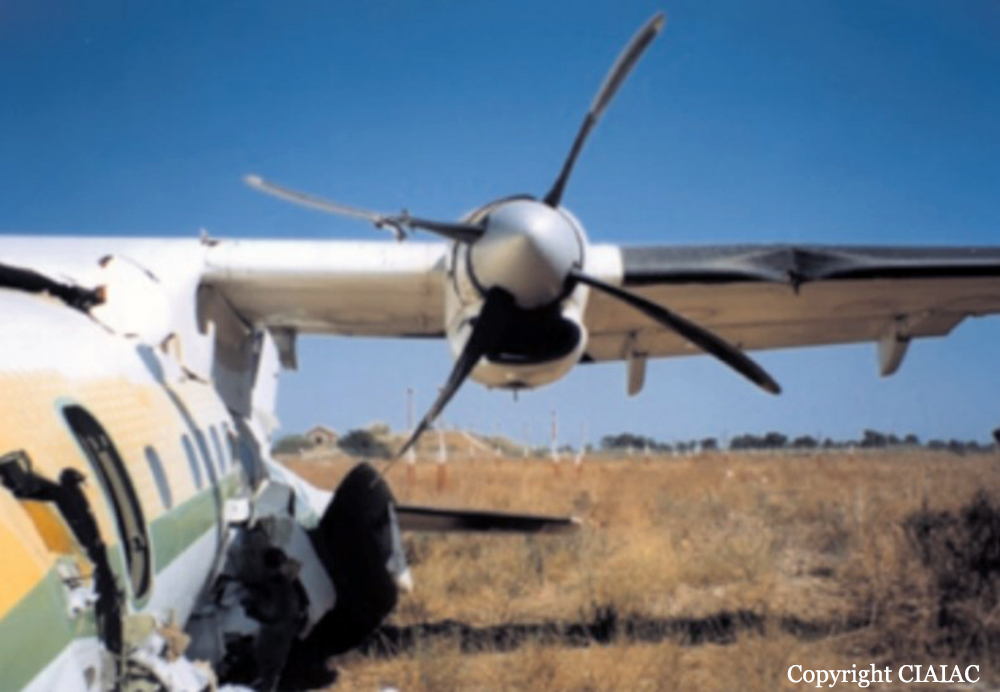Region
Crash of a Canadair CL-215-6B11 off Port de Pollença: 2 killed
Date & Time:
Mar 25, 2003
Registration:
UD.13-29
Survivors:
Yes
MSN:
1124
YOM:
1990
Crew on board:
4
Crew fatalities:
Pax on board:
0
Pax fatalities:
Other fatalities:
Total fatalities:
2
Circumstances:
The crew was completing a training flight consisting of dropping survival equipment when the aircraft crashed in unknown circumstances in the sea off Port de Pollença. Two crew members were rescued while two others were killed.
Crash of a Fokker 50 in Mellila
Date & Time:
Jan 17, 2003 at 1201 LT
Registration:
PH-FZE
Survivors:
Yes
Schedule:
Málaga – Melilla
MSN:
20182
YOM:
1990
Flight number:
YW8276
Crew on board:
5
Crew fatalities:
Pax on board:
14
Pax fatalities:
Other fatalities:
Total fatalities:
0
Captain / Total hours on type:
3500.00
Copilot / Total hours on type:
64
Aircraft flight hours:
22534
Aircraft flight cycles:
25803
Circumstances:
After landing on runway 15 at Melilla Airport, the pilot-in-command noticed that he could not engage the ground idle/reverse of both propellers, and that the aircraft did not brake normally. The aircraft started to deviate to the left of the runway axis while both pilots were applying brakes. After tyre n°3 burst, the deviation continued until the aircraft left the paved surface of the runway and finally fell through an embankment with around 15 metres of height located at the end of runway 15. The aircraft was destroyed and the pilot-in-command and other nine people suffered minor injuries. There was no fire.
Probable cause:
It is considered that the accident probably happened because of a combination of three factors:
1. An unstable approach that resulted in a higher than normal touchdown speed.
2. The inability to select propeller reverse due to the probable tripping of the circuit breaker FLIGHT IDLE SOLENOID 1 & 2 before or at touchdown.
3. The cross connection of the wheel speed transducer wire harness of wheels 3 and 4, which, due to heavy braking, produced a flat spot in wheel 3 and reduced the braking capability of wheel 4.
1. An unstable approach that resulted in a higher than normal touchdown speed.
2. The inability to select propeller reverse due to the probable tripping of the circuit breaker FLIGHT IDLE SOLENOID 1 & 2 before or at touchdown.
3. The cross connection of the wheel speed transducer wire harness of wheels 3 and 4, which, due to heavy braking, produced a flat spot in wheel 3 and reduced the braking capability of wheel 4.
Final Report:

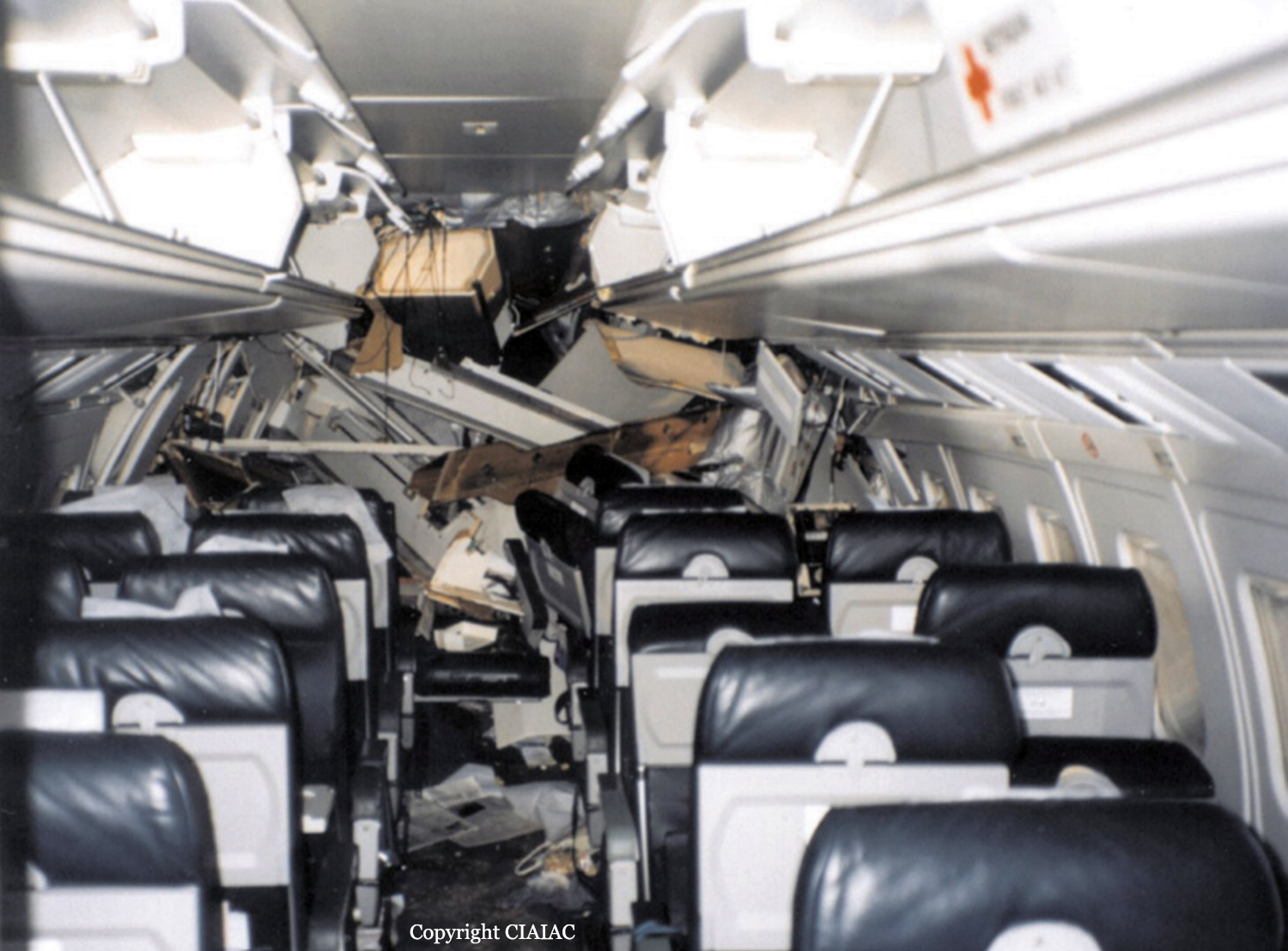

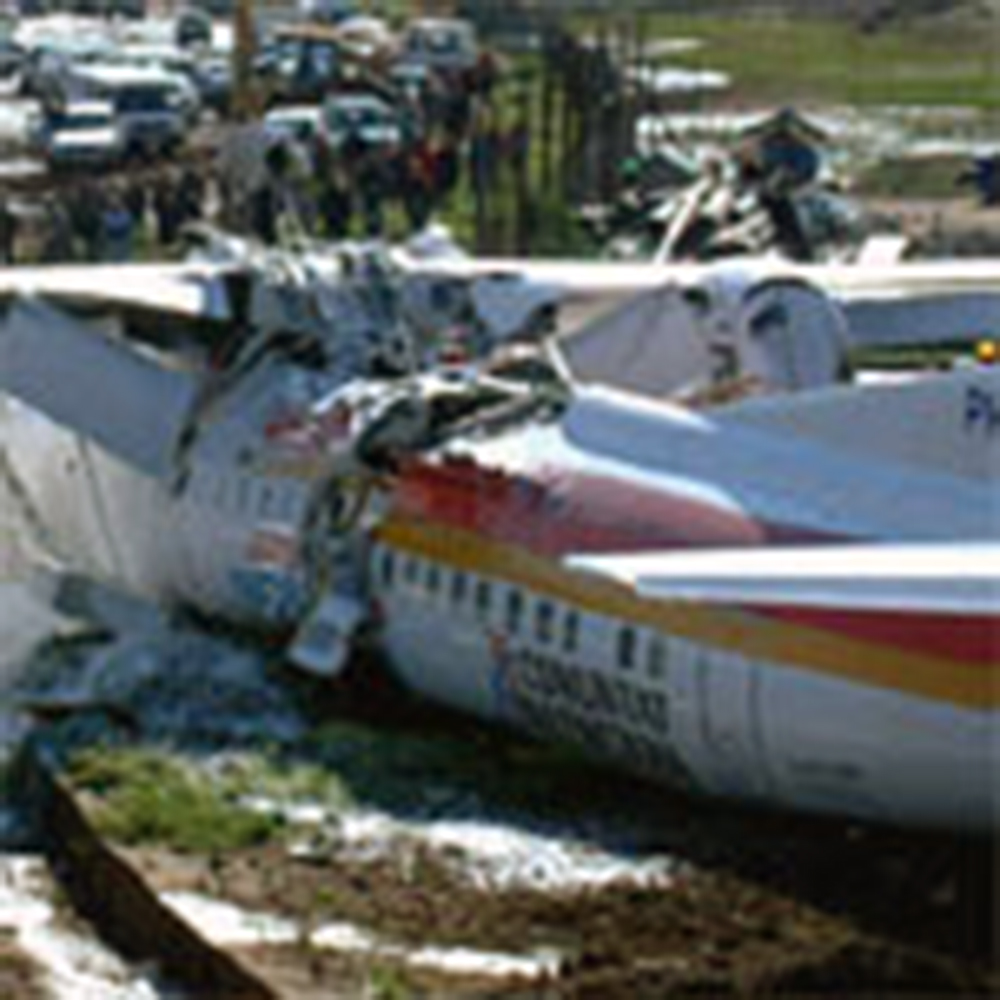


Crash of a Piper PA-46-500TP Malibu Meridian in Bunyola: 3 killed
Date & Time:
Dec 19, 2002 at 1153 LT
Registration:
N53328
Survivors:
No
Schedule:
Palma de Mallorca - Sabadell
MSN:
46-97098
YOM:
2001
Flight number:
GVN051
Crew on board:
1
Crew fatalities:
Pax on board:
2
Pax fatalities:
Other fatalities:
Total fatalities:
3
Captain / Total hours on type:
106.00
Aircraft flight hours:
140
Circumstances:
The single engine airplane departed Palma de Mallorca-Son Bonet Airport at 1146LT on a flight to Sabadell with two passengers and one pilot on board. After takeoff, the pilot was instructed by ATC to proceed to the north. Seven minutes after its departure, while flying in reduced visibility due to rain falls, the aircraft struck a rocky wall located on Mt Mola de Montserra (600 metres high) located near the village of Bunyola, about 20 km north of the airport. The aircraft disintegrated on impact and all three occupants were killed. At the time of the accident, the ceiling was at 5,000 feet with a visibility of 8 km and rain. The mountain was shrouded in cloud and thick fog.
Probable cause:
It is believed that the accident occurred as a result of the marginal VMC conditions which existed in the area where the aircraft was flying under VFR rules. The aircraft entered this area possibly due to the pilot’s disorientation and inadequate preparation and execution of the flight.
Final Report:


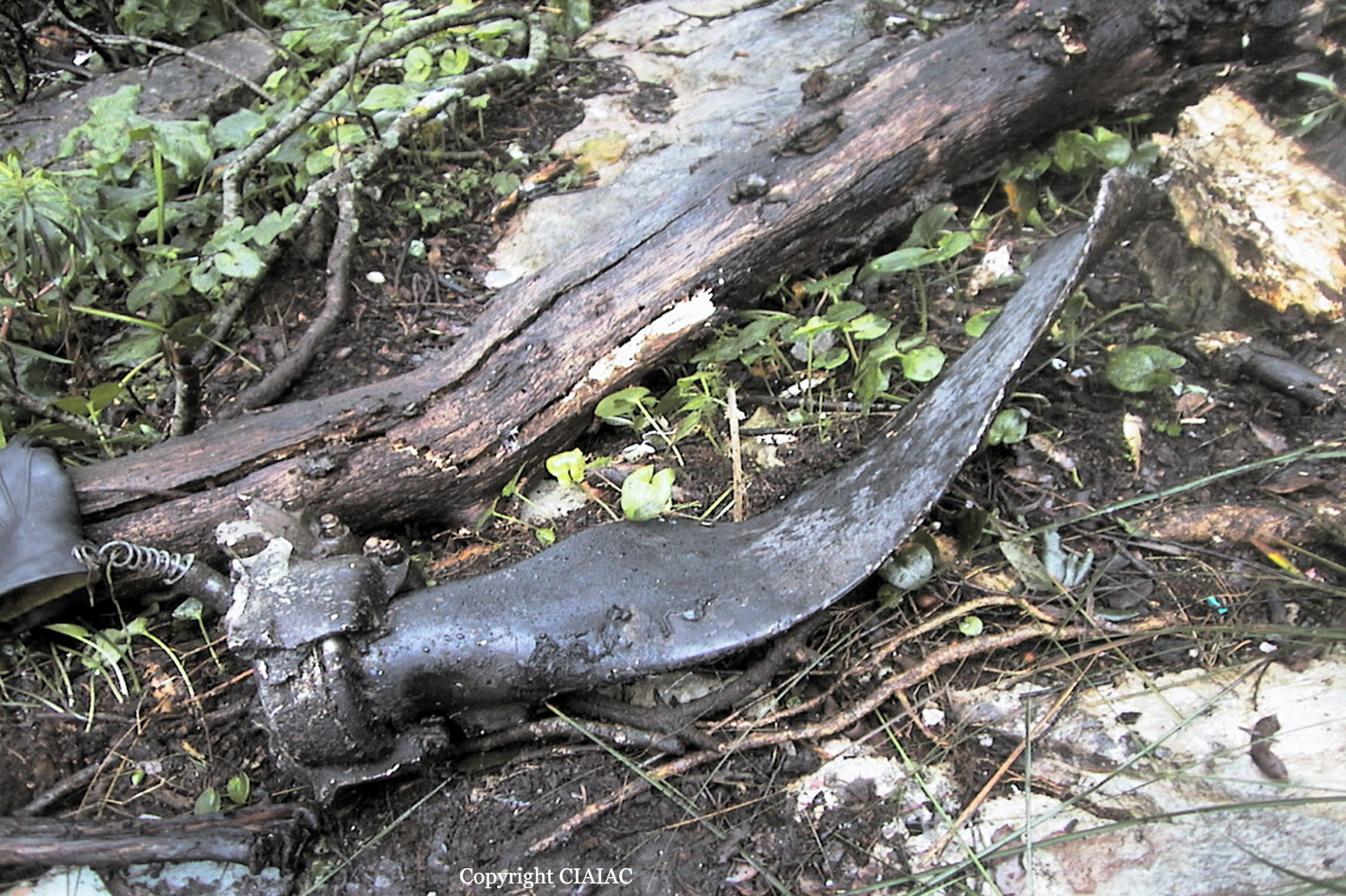
Crash of a Swearingen SA227AC Metro III in Palma de Majorca: 2 killed
Date & Time:
Apr 12, 2002 at 0506 LT
Registration:
EC-GKR
Survivors:
No
Schedule:
Madrid - Palma de Mallorca
MSN:
AC-620
YOM:
1985
Flight number:
TDC306
Crew on board:
2
Crew fatalities:
Pax on board:
0
Pax fatalities:
Other fatalities:
Total fatalities:
2
Captain / Total hours on type:
2162.00
Copilot / Total hours on type:
487
Aircraft flight hours:
29726
Circumstances:
The twin engine aircraft departed Madrid-Barajas Airport at 0338LT on a cargo flight to Palma de Mallorca, carrying two pilots and a load of 1,340 kilos consisting of various goods. On a night approach to Palm Airport runway 24L, the crew completed a last turn when the aircraft stalled and struck the runway surface. Out of control, it veered to the right, collided with a lightning system and came to rest upside down in a grassy area. The aircraft was destroyed and both pilots were killed.
Probable cause:
The accident is considered to have occurred as a result of the aircraft performing a very close turn maneuver performed at night, at low altitude and descending in a non-standard approach, not in accordance with normal procedures and company procedures. The crew could not control the descending aircraft due to a possible start of loss of lift, slip on the turn, or both.
Final Report:
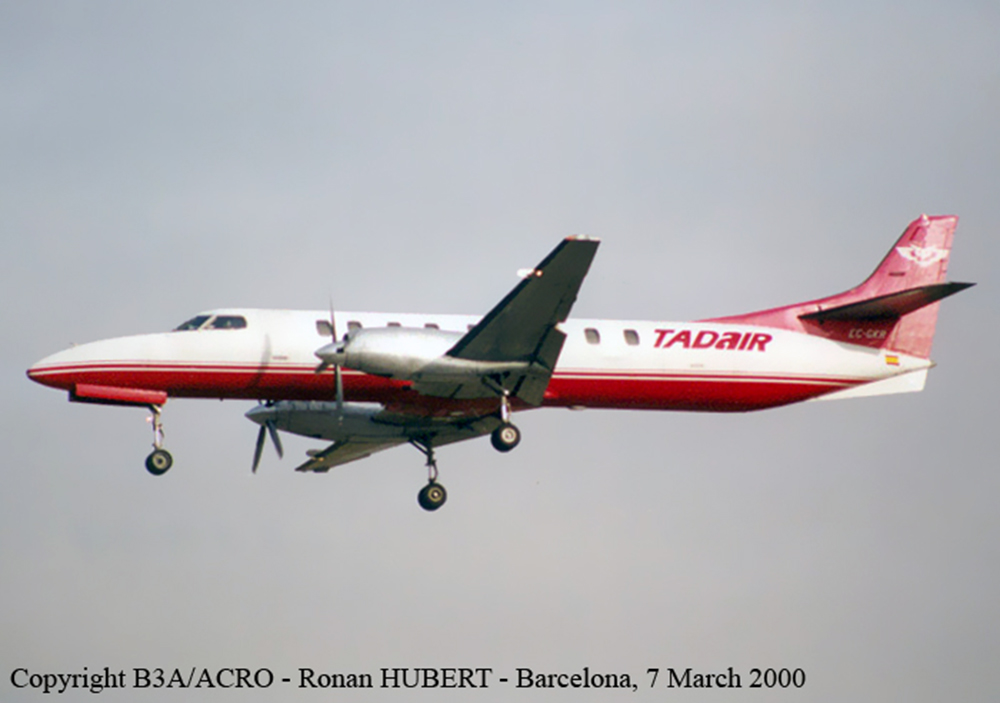
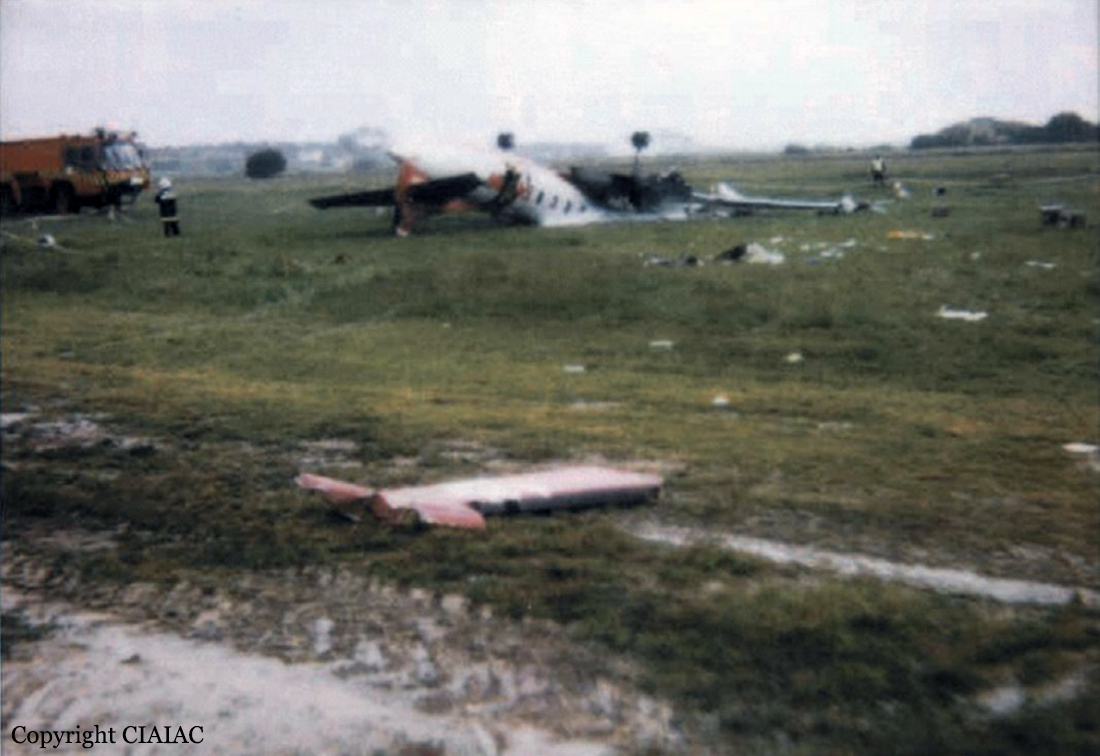
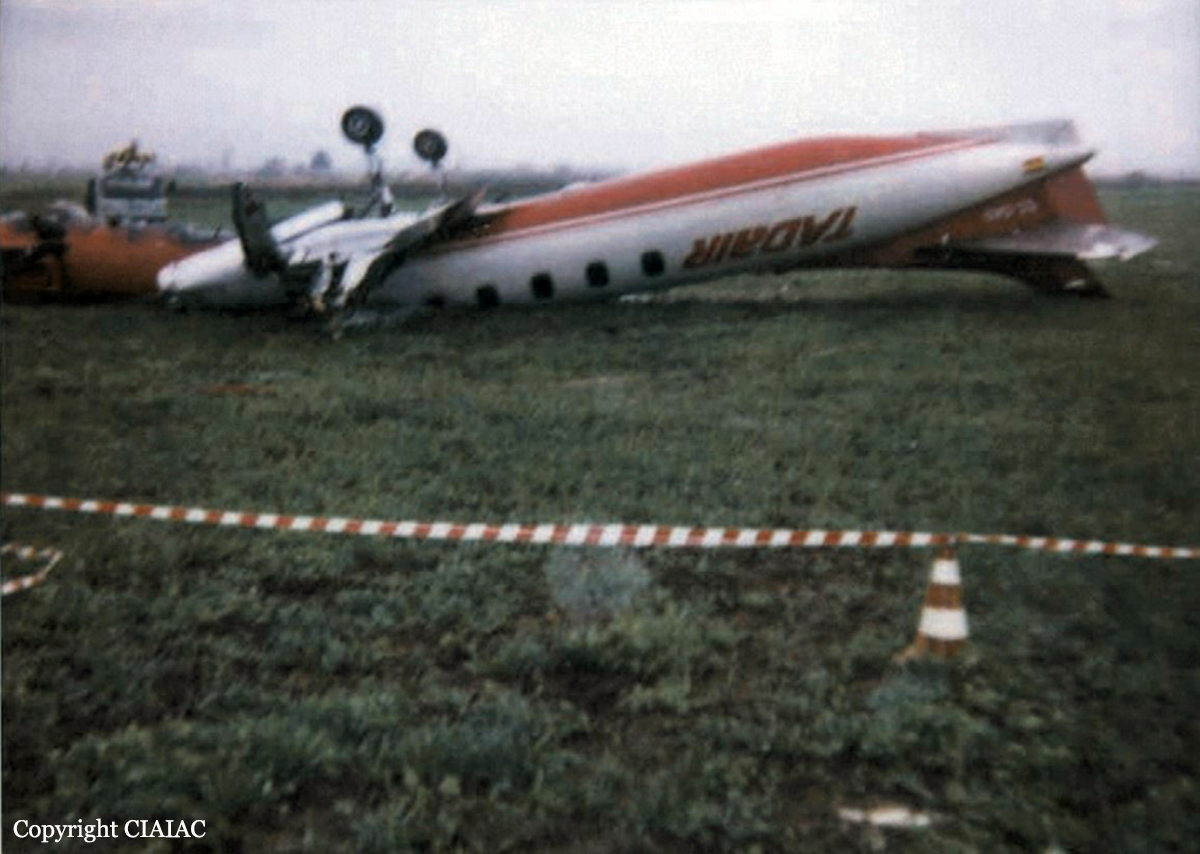
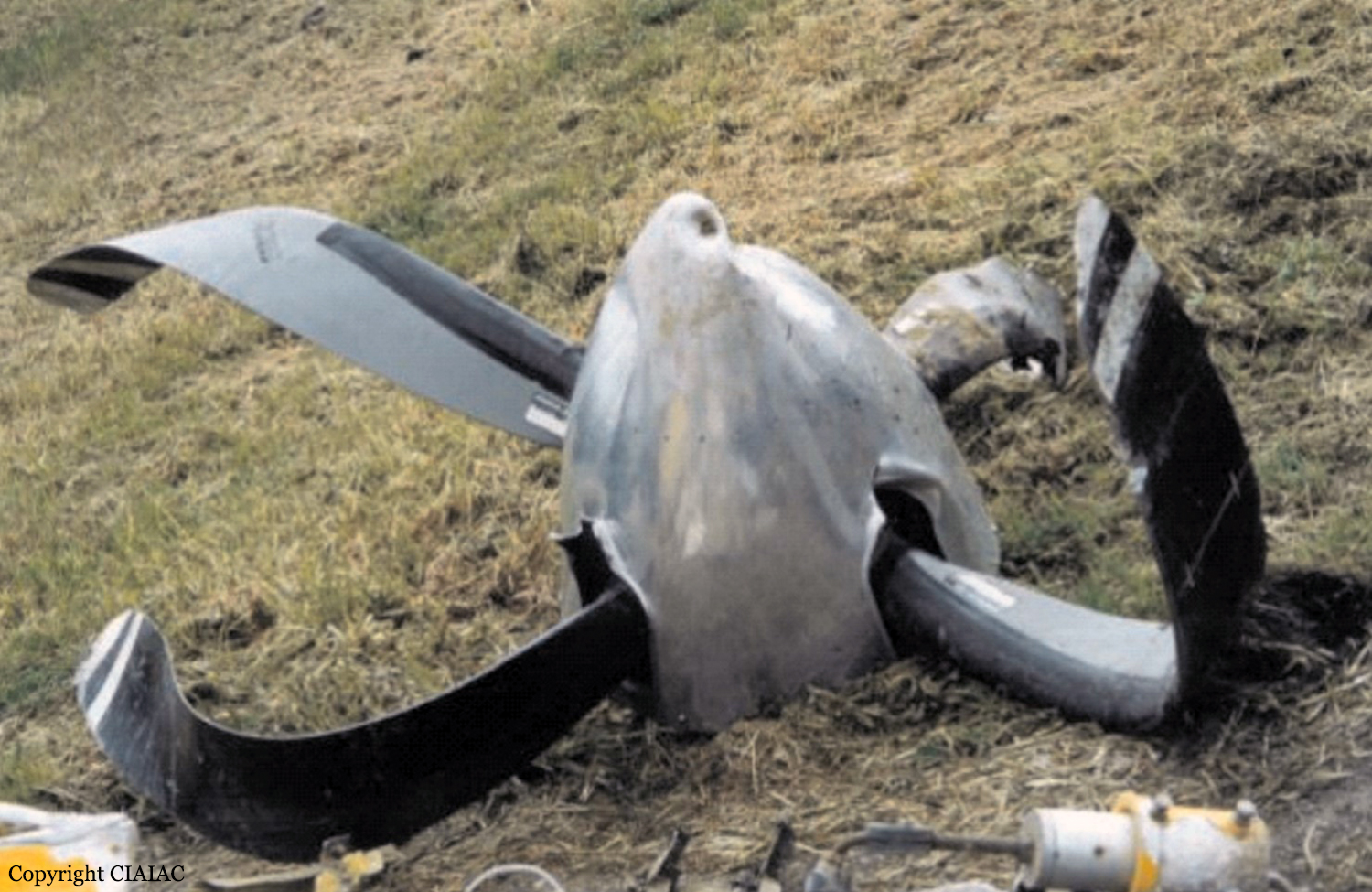
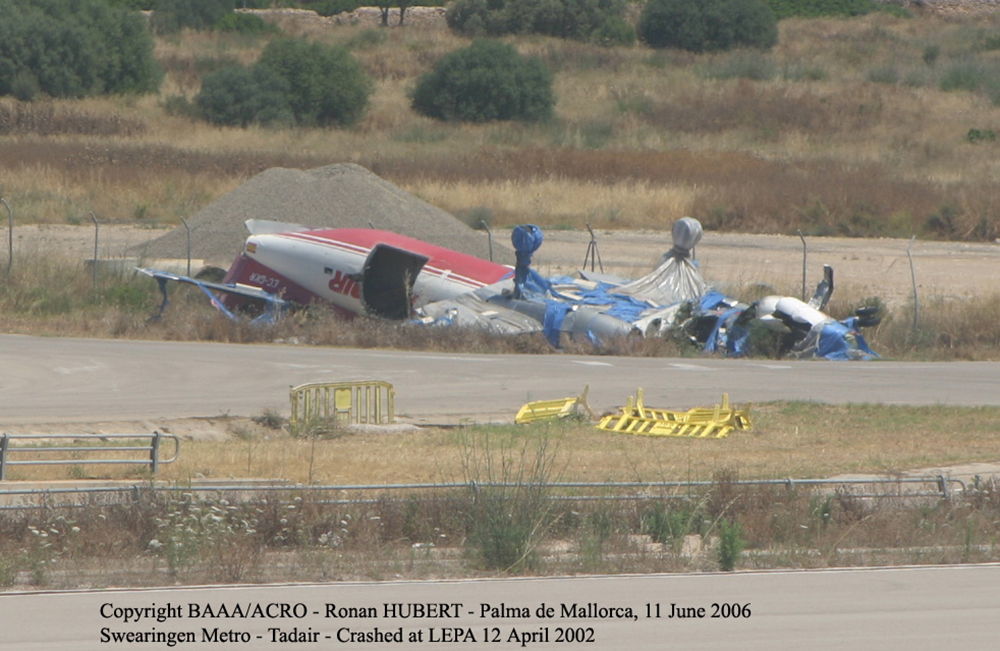
Crash of an Embraer EMB-120RT Brasília in Zaldíbar: 3 killed
Date & Time:
Jan 14, 2002 at 0728 LT
Registration:
EC-GTJ
Survivors:
No
Schedule:
Madrid - Bilbao
MSN:
120-024
YOM:
1986
Flight number:
IBT1278
Crew on board:
2
Crew fatalities:
Pax on board:
1
Pax fatalities:
Other fatalities:
Total fatalities:
3
Captain / Total hours on type:
1575.00
Copilot / Total hours on type:
832
Aircraft flight hours:
23578
Aircraft flight cycles:
29468
Circumstances:
The twin engine airplane departed Madrid-Barajas at 0635LT on a cargo service (flight IBT1278) to Bilbao, carrying one company mechanic, two pilots and a load of cargo consisting of 2,873 kilos of various goods. Following an uneventful flight, the crew was cleared to start the descent to Bilbao-Sondica Airport for an ILS approach to runway 30. During the descent, the crew encountered control problems which he attributed to an autopilot malfunction. While trying to identify the problem, the crew failed to realized that the rate of descent increased when the GPWS alarm sounded three times. Shortly later, while attempting to gain height, the aircraft struck the slope of Mt Santa Marina Vieja located 33 km from Bilbao Airport. The aircraft was destroyed by impact forces and all three occupants were killed. The wreckage was found near the village of Zaldíbar.
Probable cause:
Controlled flight into terrain after the crew failed to maintain an adequate separation with the ground because his attention was focused on the disconnection of the autopilot system. It was also determined that the crew failed to comply with the Standard Operating Procedures published by the operator.
Final Report:
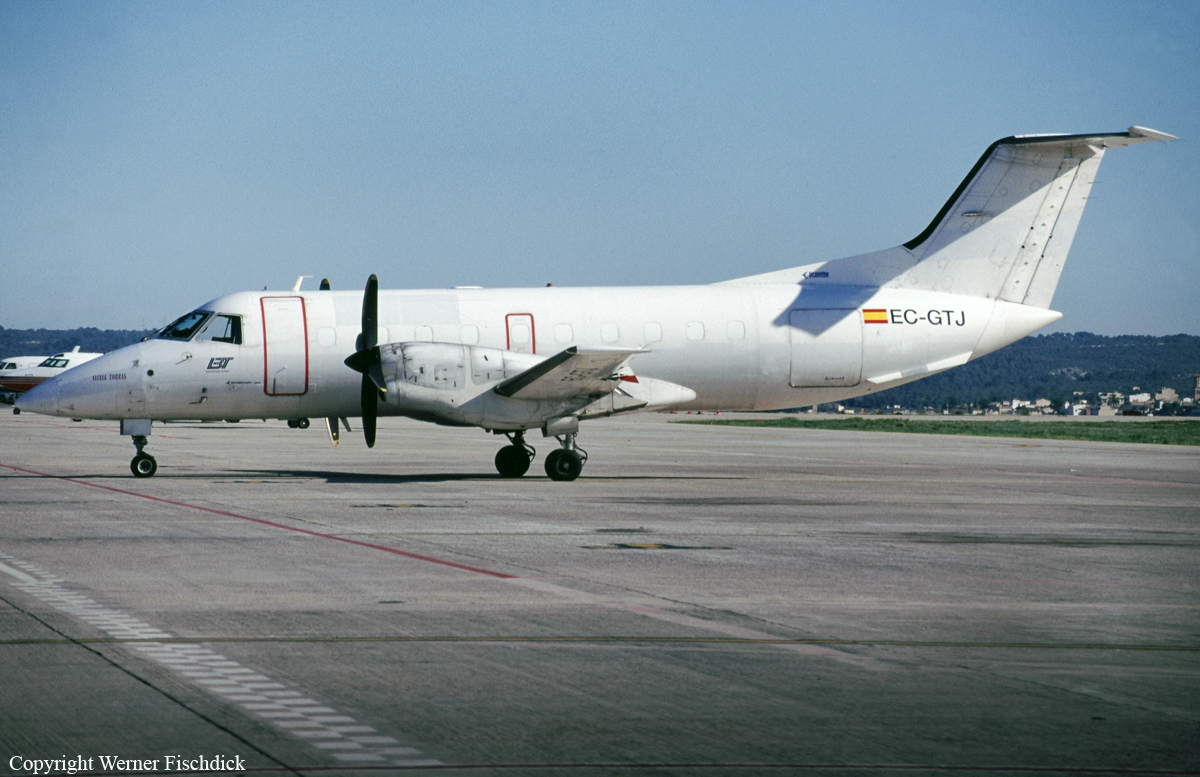
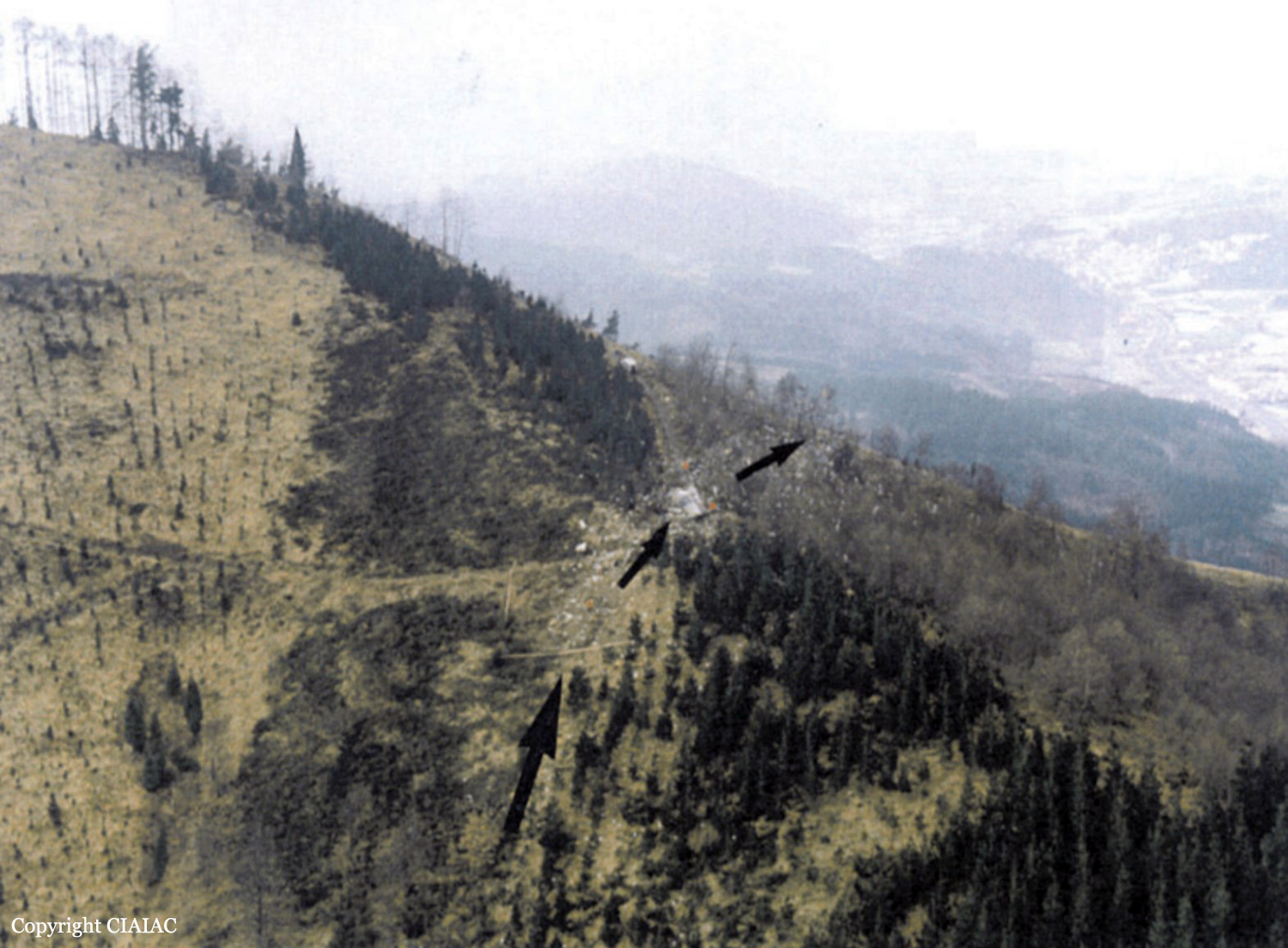
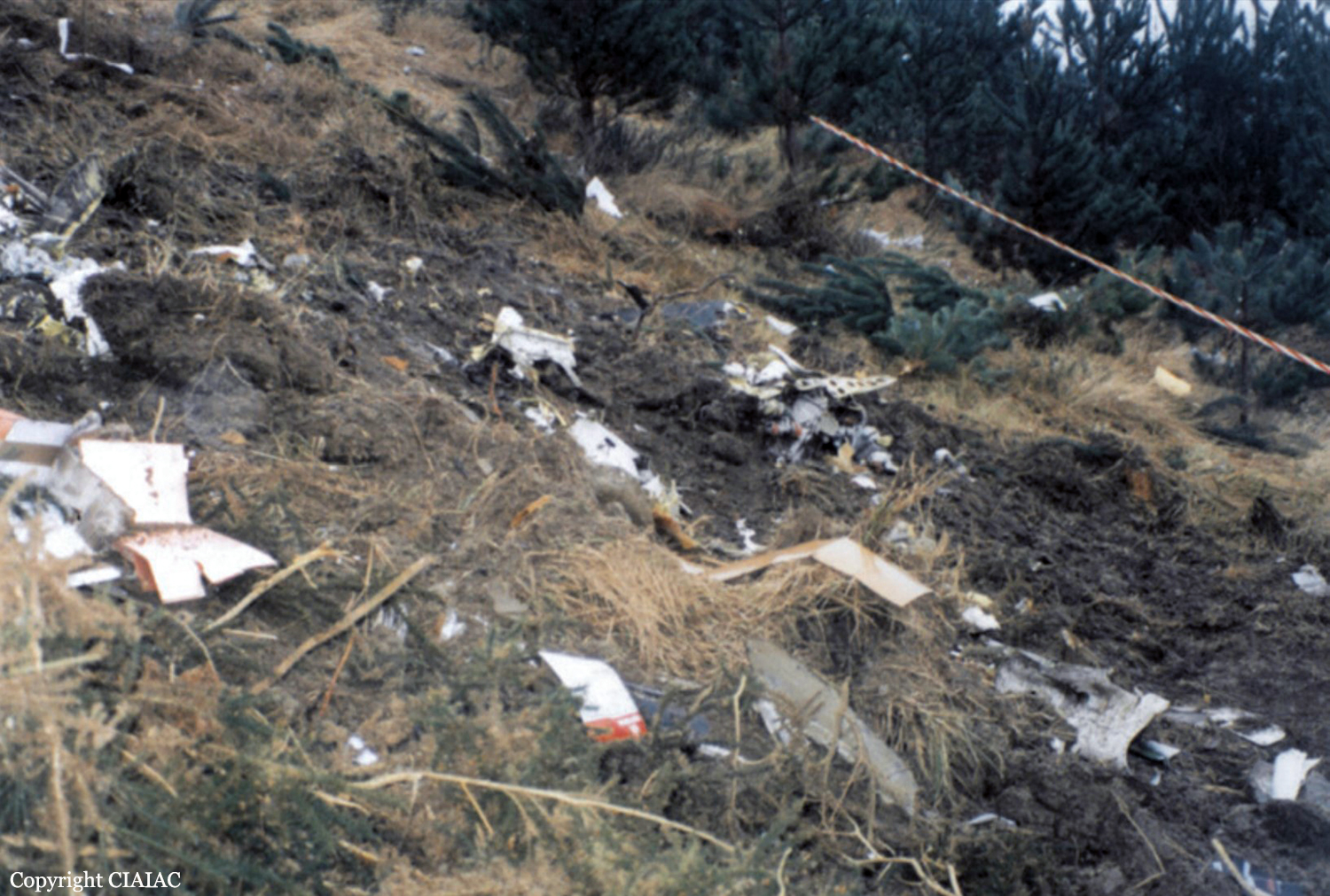
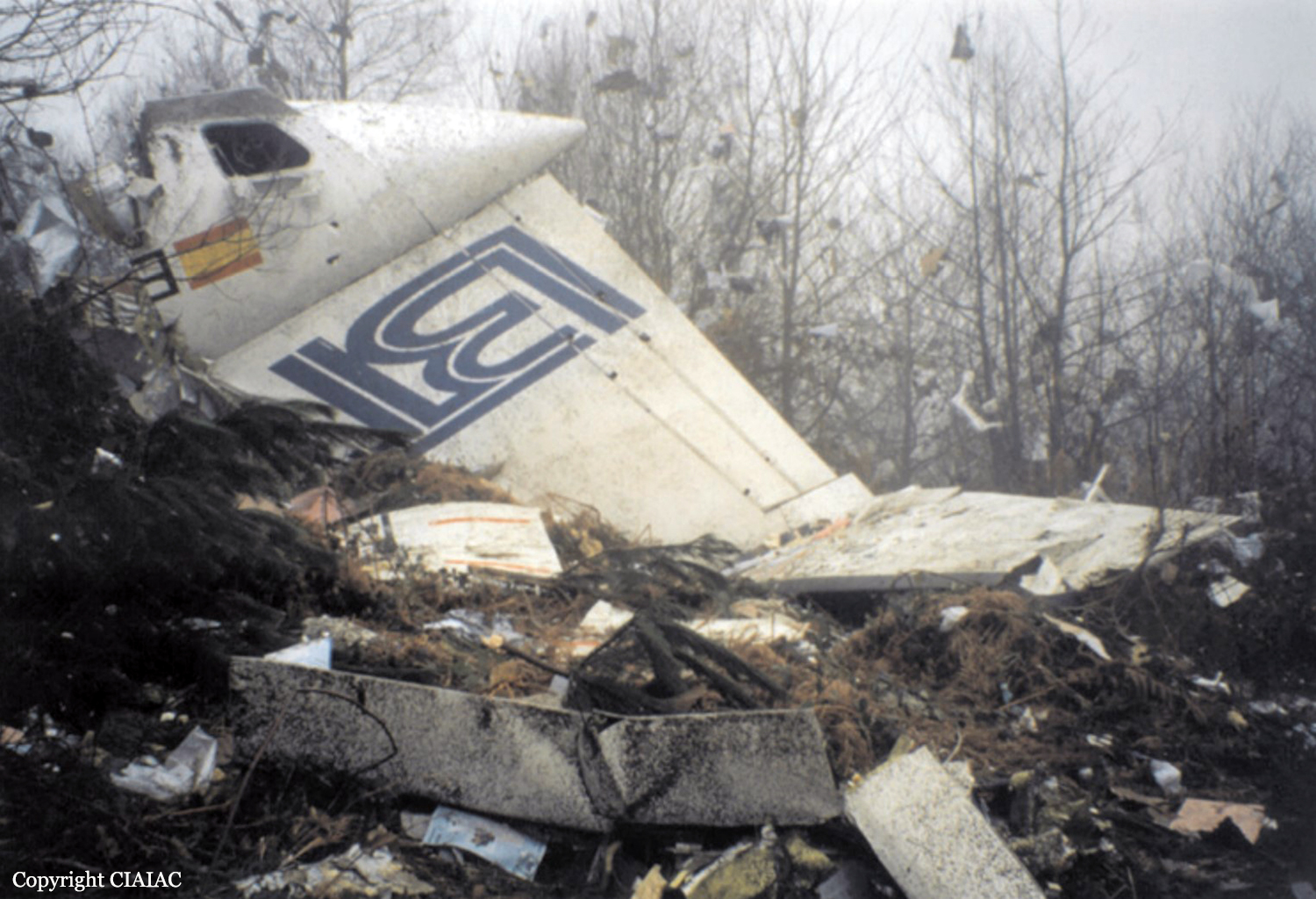
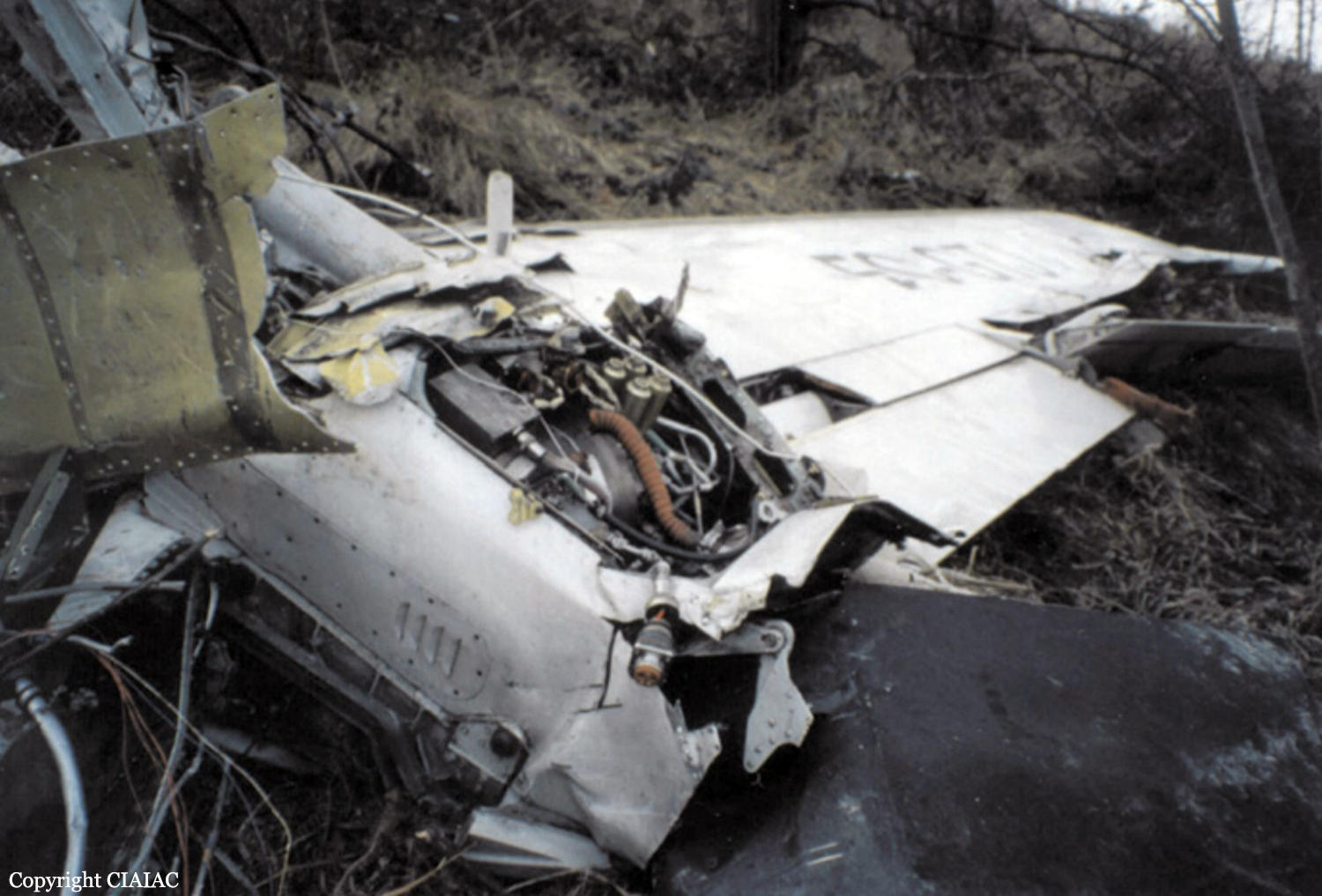
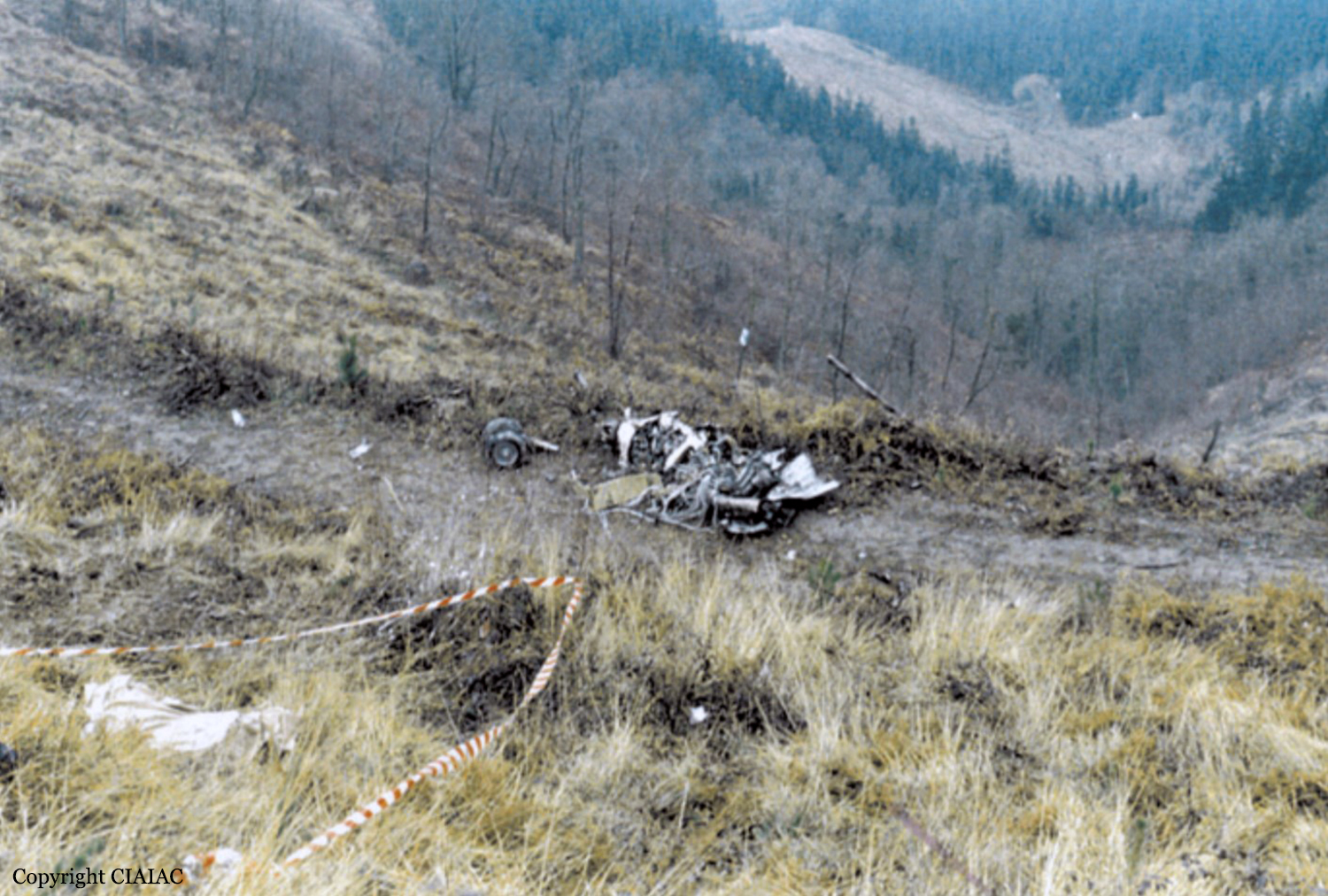
Crash of a Swearingen SA226AT Merlin IVA off Columbretes Islands: 10 killed
Date & Time:
Oct 10, 2001 at 1042 LT
Registration:
EC-GDV
Survivors:
No
Schedule:
Barcelona - Oran
MSN:
AT-043
YOM:
1976
Flight number:
FTL101
Crew on board:
2
Crew fatalities:
Pax on board:
8
Pax fatalities:
Other fatalities:
Total fatalities:
10
Aircraft flight hours:
11950
Circumstances:
The twin engine airplane departed Barcelona Airport at 1018LT on a charter flight to Oran, Algeria, carrying eight American businessmen and two pilots. En route, while cruising along the Spanish coast, the crew encountered poor weather conditions with thunderstorm activity, and was cleared to deviate from the prescribed flight plan to the east. Shortly later, the aircraft entered an area of heavy turbulences and was presumably struck by lighting, causing the electrical system to fail. The aircraft entered an uncontrolled descent and crashed in the Mediterranean Sea about 18 km northwest of the Columbretes Islands. Few debris were found floating on water and all 10 occupants were killed.
Probable cause:
Although the causes of the accident could not be determined, considering the circumstances in which it occurred and the history of similar events with aircraft of the same type, is considered that the probable cause of the accident was a total loss of the electrical system, caused by a lightning strike in the middle of the storm in which it was flying, without the crew being able to recover. It is possible that the lightning strike produced other damages to the airplane and/or could have induced or produced failures in other systems of the airplane. The set of these circumstances, aggravated by the storm, with strong rains and turbulence and the associated lack of visibility, lead to the impact of the airplane with the sea.
Final Report:

Crash of a Casa-Nurtanio CN-235-200 (IPTN) in Málaga: 4 killed
Date & Time:
Aug 29, 2001 at 1016 LT
Registration:
EC-FBC
Survivors:
Yes
Schedule:
Melilla – Málaga
MSN:
C-033
YOM:
1990
Flight number:
AX8261
Crew on board:
3
Crew fatalities:
Pax on board:
44
Pax fatalities:
Other fatalities:
Total fatalities:
4
Captain / Total hours on type:
4166.00
Copilot / Total hours on type:
4885
Aircraft flight hours:
14577
Aircraft flight cycles:
20780
Circumstances:
Following an uneventful flight from Melilla, the crew was cleared to descend to Málaga-Pablo Ruiz Picasso Airport. On final approach to runway 32, the crew encountered an unexpected situation when the engine fire warning light came on in the cockpit panel, indicating a fire on the left engine. The copilot informed ATC and after he declared an emergency, was cleared to land on runway 32. On short final, both engines stopped. The aircraft stalled and crashed 538 metres short of runway threshold and came to rest against the embankment of a motorway. The captain and three passengers were killed while all other occupants were injured, some of them seriously. The aircraft was destroyed.
Probable cause:
It is considered that the cause of the accident was the incorrect execution, by the crew, of the emergency procedure of fire or serious damage to an engine contained in the Flight Operations Manual that was on board the aircraft, causing the consecutive shutdown of both engines with the consequent total loss of thrust, so that the progression of the flight was impeded. The activation of the emergency procedure occurred as a consequence of a left engine fire warning which turned out to be false. The appearance of the false fire warning could be caused by the presence of moisture and/or dirt in the connectors of the fire detector circuit. It is considered that a contributing factor to these circumstances could be the definition of maintenance tasks for that system in the Aircraft Maintenance Manual, which was not compliant to the methods recommended by the manufacturer of the fire detection system to avoid the existence of humidity in the installation. As factors that could have contributed to the incorrect performance of the crew during the application of the emergency procedure, the following are considered:
- A lack of coordination in the piloting tasks, carried out in the absence of 'Crew Resource Management" criteria.
- Insufficient training for the cockpit change received by the copilot, which did not include simulator training for the application of emergency procedures.
- A lack of coordination in the piloting tasks, carried out in the absence of 'Crew Resource Management" criteria.
- Insufficient training for the cockpit change received by the copilot, which did not include simulator training for the application of emergency procedures.
Final Report:

